The Oriental White Stork, commonly known as ‘kounotori’ in Japan, is a large stork that is at the apex of the wetland food chain. They are carnivorous and feed on small creatures such as fish, frogs, snakes, and grasshoppers. They are large feeders and eat approximately 500g per day in captivity.
- Scientific Name
- Ciconia boyciana
- Common Name (Japanese)
- Kounotori
- Common Name (English)
- Oriental White Stork
- Weight
- Up to 4-5kg
- Height
- Avg. 1.1m
- Wingspan
- Avg. 2m
Preserving a National Natural Treasure - How one city is saving the Oriental White Stork from extinction
The Oriental White Stork is a large carnivorous bird with populations throughout east Asia, including Japan.
In Japan, due to excessive pesticide usage during and after World War II, many of the Oriental White Stork’s feeding grounds such as the rice fields became difficult places to find food.
The stork’s numbers dwindled throughout Japan over the decades, and in 1971, the last stork disappeared from Japan’s skies right here in Toyooka City.
To save the Oriental White Stork from complete extinction, citizens thankfully captured some of the last remaining ones in the 1960s and began to raise them in captivity.
When they did, they made a promise to the storks: “We will, one day, bring you back to the wild.” In order to fulfill their promise Toyooka City is taking every step possible to ensure the storks’ return to the wild will continue to be successful.
Reintroduction of the Oriental White Stork into the Wild
Toyooka City created a breeding and research facility to begin breeding and raising the storks in captivity, and in 2005, Toyooka City successfully reintroduced them back into the Japanese wilderness for the first time.
Currently, about 350 Oriental White Storks fly grandly in the skies of Japan. Long after being released, many still prefer to stay in Toyooka City.
This Toyooka City project to reintroduce the Oriental White Storks to the wild is a unique and notable task with international recognition.
The countless hours, great efforts and expenditure put into the revival of the Oriental White Stork by Toyooka City has brought these once extinct storks back to live in coexistence with humans.
A Supportive Environment - Habitat Preservation
A supportive environment is essential for the Oriental White Stork to be successful in the wild. They are at the top of Japan’s natural ecosystem food chain, so their environment must support the animals they feed on as well. Ideal locations are undeveloped wetlands near populated areas, rice paddies, rivers, and waterways.
Along with a supportive natural environment, it is also necessary to have a strong cultural environment conducive to the Oriental White Stork. Human lifestyles were a notable factor that contributed to the near extinction of the species in the past.
In Toyooka, work has been done to preserve and create an optimal wetland environment for their permanent habitat. There are currently more than 6 of these habitats in Toyooka. They include Hachigoro Toshima Wetland, Kaya Wetland, the Maruyama River, Tai Wetland, the Rice Paddy Biotope, Lower Maruyama River, and surrounding rice paddies.
Manmade nesting towers have also been installed throughout the region to encourage mating.
-
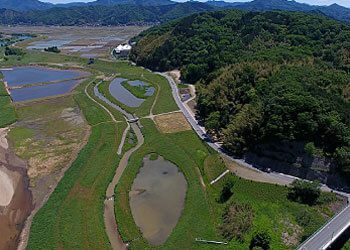
Kaya Wetland
Various wetlands created from the nearby riverbeds of the Maruyama River and Izushi River.
-
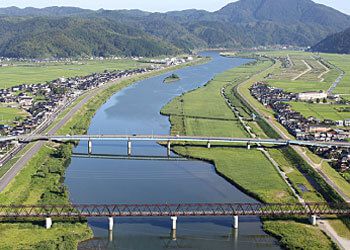
Maruyama River
Working with the flood management policy, many shallows are being created along the riverbed to promote the restoration of nature.
-
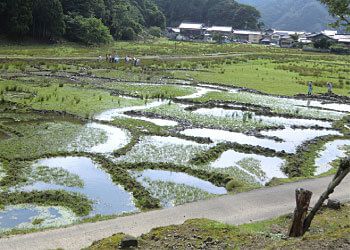
Tai Wetland
The people of Tai area near Kinosaki Onsen along with many researchers and other fundamental groups are involved in the preservation of the surrounding rice paddies to create this flourishing wetland.
-
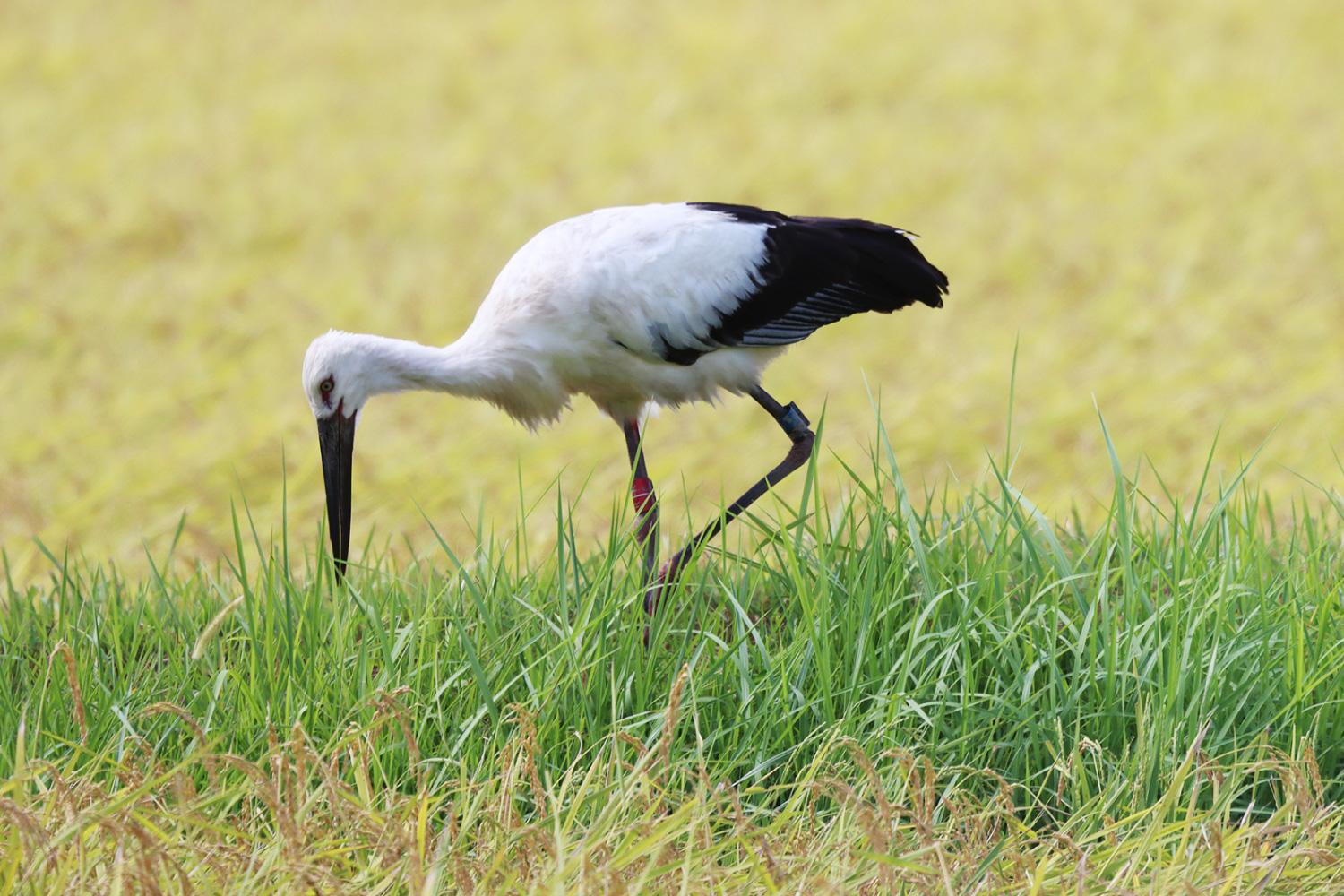
Rice Paddy Biotope
Unused rice fields are turned into biotopes and used as corridors for connecting wetlands, creating a greater feeding area for the Oriental White Stork.
-
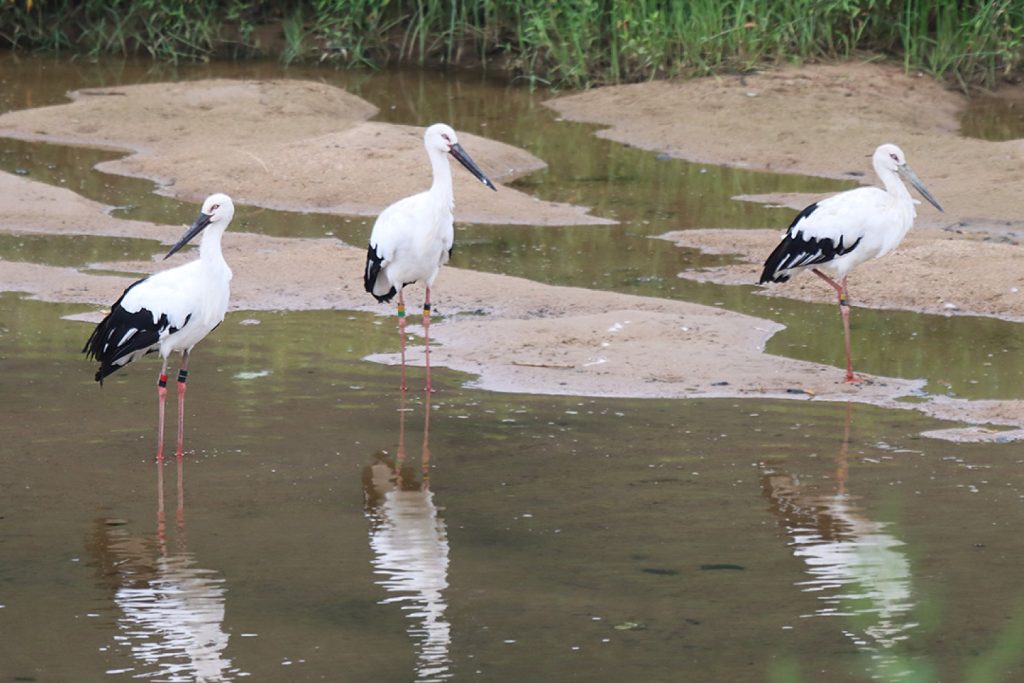
Lower Maruyama River & Surrounding Rice Paddies
These shallow waters are ideal for hunting small creatures using the Oriental White Stork’s long beak.
-
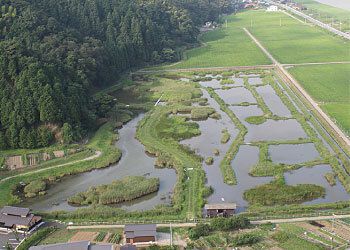
Hachigoro Toshima Wetlands
Named after the wild Oriental White Stork from mainland China called “Hachigoro” that likes to call this wetland home. Chicks have continuously hatched in the artificial nesting tower set in the wetland since 2008.
CONTRIBUTE TO INTERNATIONAL PROJECTS FOR THE CONSERVATION OF SPECIES
The number of Oriental White Storks worldwide is estimated to be about 3,000 with approximately 350 in Japan.
We continue to pursue the conservation, restoration and establishment of environments, like the ones above, in which the storks can survive and thrive.
We are also fulfilling our duty to the international conservation of species as the last habitat in Japan for the Oriental White Stork.
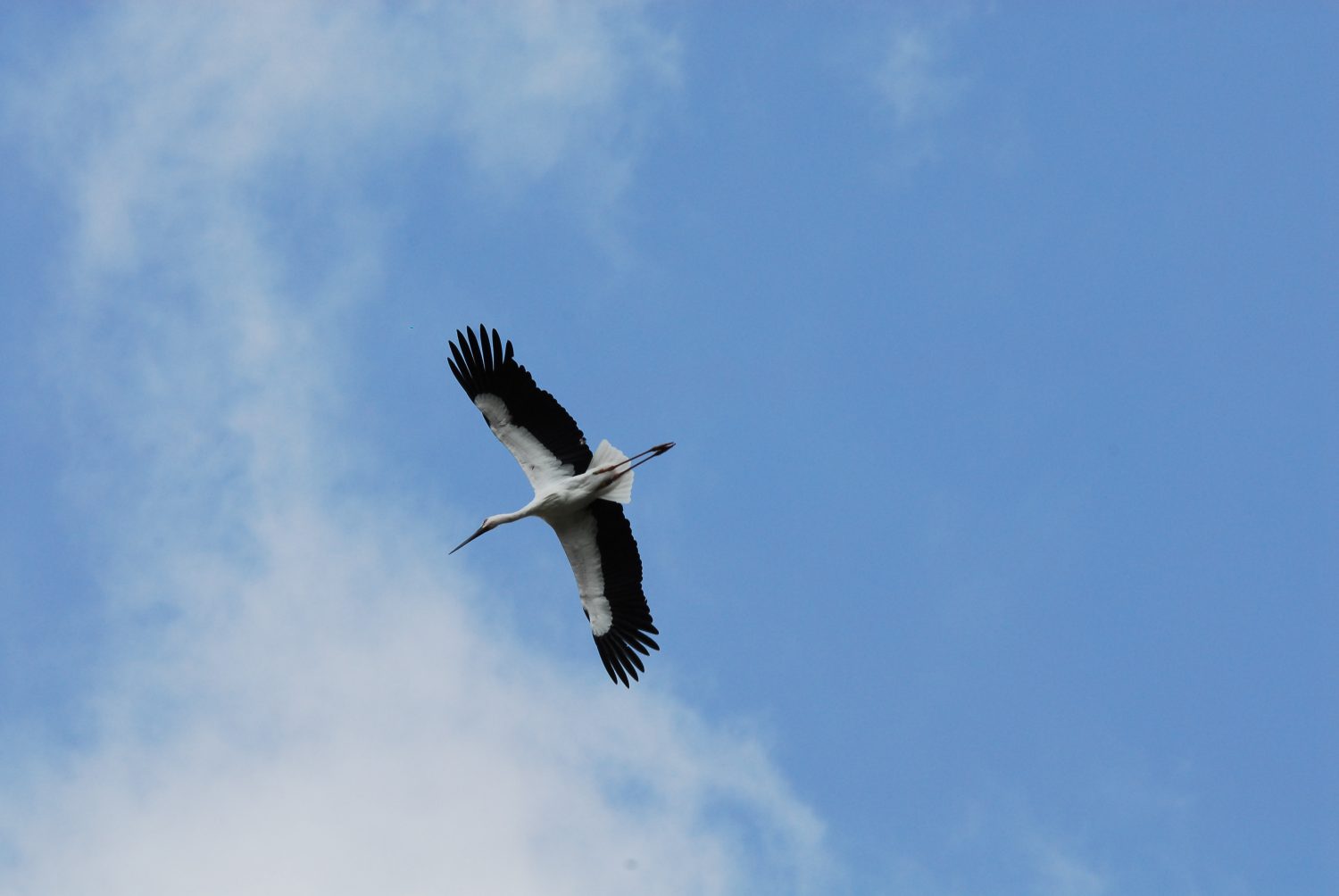
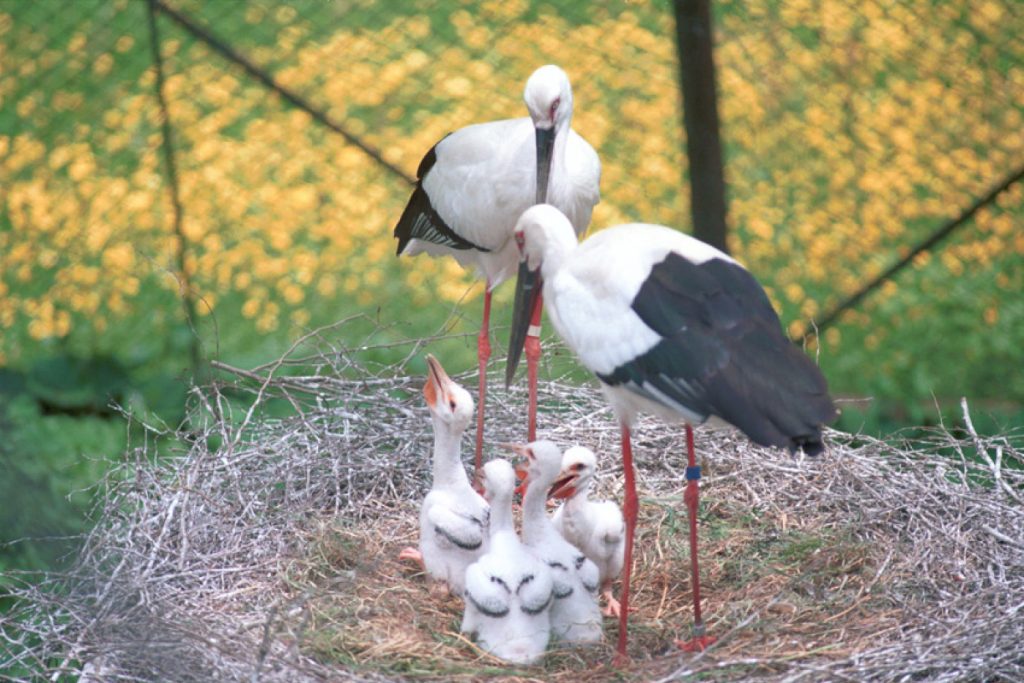

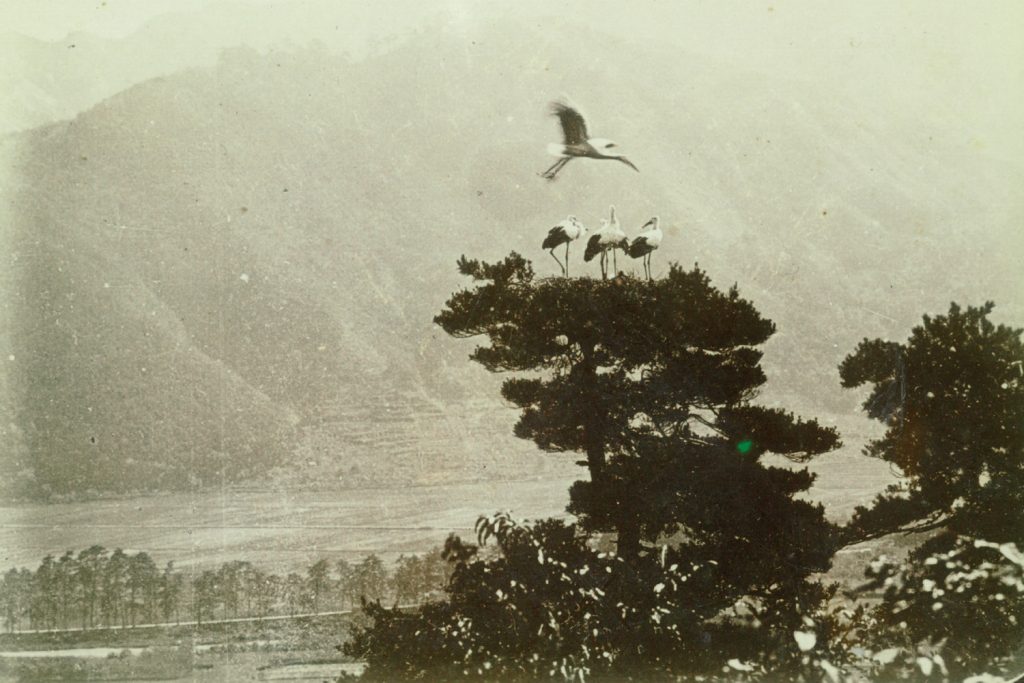
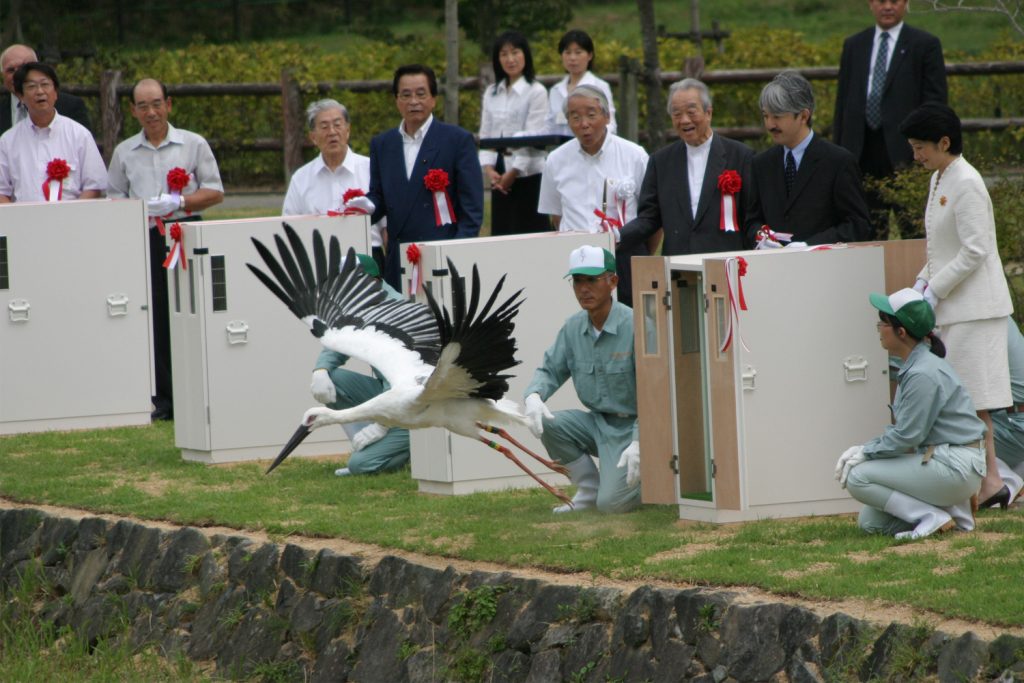


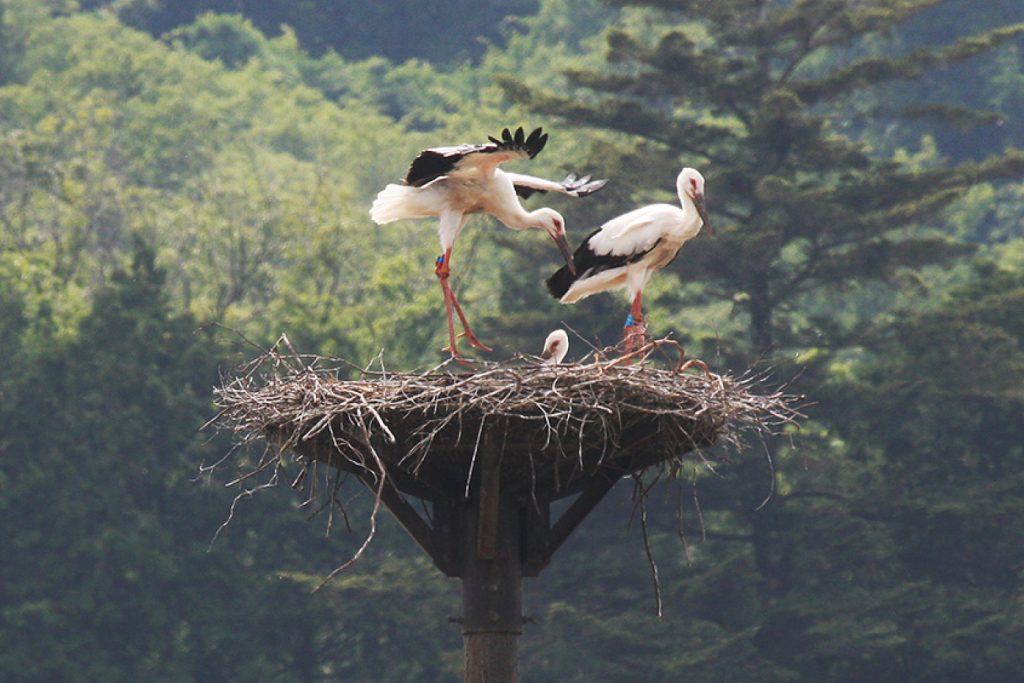
This majestic creature, the Oriental White Stork, dances through the skies once again.